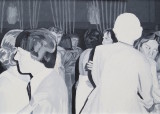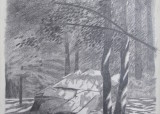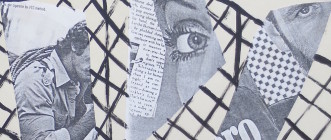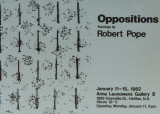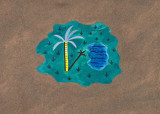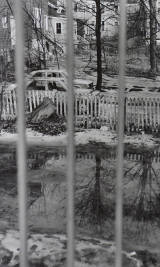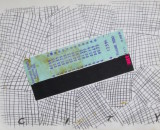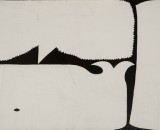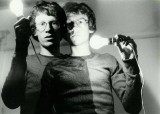Early Work
In Robert’s art school sketchbooks, pages are crammed with images and text. Text includes ideas for paintings, lyrics to songs, impressions of the city, meditations on the truth and falsehood of images, thoughts about school and other institutions. Robert read the newspaper with an eye for stories, making pictures of the Ocean Ranger oil rig disaster off the coast of Newfoundland and the Three Mile Island nuclear reactor accident.
Through NSCAD, Robert made his first trips to New York. He became fascinated by the theme of the city, searching out contrasts, patterns and symbolic elements. He viewed New York as a roller coaster ride through a maze of billboard ads, where entertainment and mass consumption become one and the same.
The academic notion that art reflects or critiques social attitudes caused a revolution in Robert’s thinking. A photography course led Robert to create a photo series on the theme of “fences.” Fences create boundaries, secure property lines, and organize space into functional units, such as parking areas, private spaces, recreational areas, and spaces housing dangerous and sensitive material. Fences also limit the photographer and viewer’s access to a scene. This was Robert’s first foray into documentary. Documentary would later combine with fantasy to become an important way of approaching subjects in his later work.
While at school, Robert worked with collage, as well as advancing his skills in painting and drawing. High School Dance shows multiple figures in a complex composition that tries to reconcile interests in Pop Art and social realism. Mirage uses mixed media to explore ideas about reality and illusion in art.
